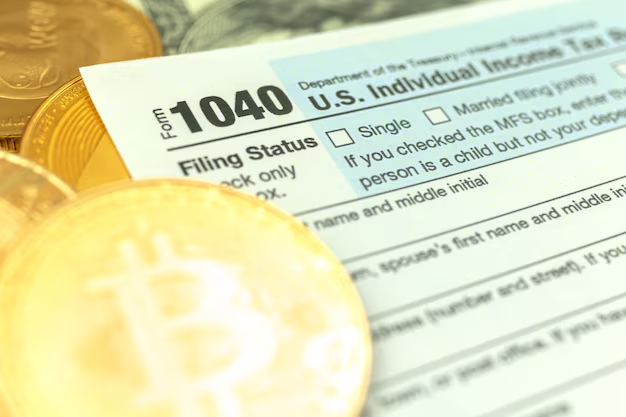Can Trump Lower Capital Gains Tax? Exploring the Possibilities and Implications
Every election cycle brings with it a slew of economic proposals and campaign promises that capture the public's imagination. With the potential for significant changes in tax policy, one topic that often becomes a focal point during political campaigns is the capital gains tax. As a key component of the U.S. tax structure, any alterations to how capital gains are taxed can have widespread implications for investors, businesses, and the broader economy. So, could former President Donald Trump, if back in the political spotlight, propose a reduction in capital gains tax? Let's explore this question from multiple perspectives.
Understanding Capital Gains Tax
Before delving into potential policy changes, it's essential to understand what capital gains tax is and how it affects investors. Capital gains tax is levied on the profit realized from the sale of assets or investments, such as stocks, bonds, or real estate. The tax is only due when the asset is sold, not while it is held.
Short-Term vs. Long-Term Gains
There are two types of capital gains:
- Short-term capital gains: For assets held for one year or less, these are taxed at ordinary income tax rates.
- Long-term capital gains: For assets held longer than one year, these are taxed at reduced rates, typically lower than ordinary income tax rates.
Why These Taxes Matter
Capital gains taxes can influence investment decisions significantly. Investors often strategize around these taxes to optimize returns, frequently holding assets longer to benefit from the lower long-term rates.
Historical Context: Trump’s Tax Policies
During his presidency, Donald Trump's administration enacted comprehensive tax reforms through the Tax Cuts and Jobs Act (TCJA) of 2017. While this act did not directly reduce the capital gains tax rates, it highlighted Trump's approach to tax as a means of stimulating economic growth.
The Tax Cuts and Jobs Act
Key aspects of TCJA included:
- Lowering the corporate tax rate from 35% to 21%.
- Repealing the corporate alternative minimum tax.
- Introducing a deduction for pass-through business income.
These measures aimed to enhance economic competitiveness and spur job creation, though the capital gains tax rates remained unchanged.
Possible Policy Proposals
Speculation about Trump's potential future proposals often includes ideas that align with his economic philosophy. Lowering the capital gains tax may be on the table, aligning with the broader Republican agenda of reducing taxation to promote investment and economic growth.
Arguments For Reducing Capital Gains Tax
- Stimulating Investment: Lower taxes on capital gains could incentivize more investments in the stock market and real estate, driving economic growth.
- Increasing Disposable Income: By decreasing tax liabilities, individuals and businesses could have more capital for reinvestment or consumption.
- Creating Jobs: More investment could potentially lead to job creation as businesses expand or start new projects.
Arguments Against Reducing Capital Gains Tax
- Widening Inequality: Critics argue that such tax cuts primarily benefit the wealthy, who are more likely to own investment assets.
- Revenue Shortfall: Lower taxes could reduce federal revenue, potentially impacting funding for essential public services.
- Risking Budget Deficits: Without offsetting revenue increases, tax cuts could exacerbate national debt concerns.
Broader Economic Implications
Altering the capital gains tax has ripple effects beyond just investors.
Market Reactions
Historically, tax policy changes can lead to short-term volatility as investors reposition their portfolios. Broader, long-term impacts depend on how changes align with market conditions and investor sentiments.
Impact on Economic Growth
While lower taxes could spur immediate investment, the true economic benefits depend on how these investments translate into broader productivity gains and income distribution improvements.
Looking at Alternatives
Other strategies beyond cutting capital gains taxes could also meet economic goals without the associated downsides.
Indexed Capital Gains
Some suggest adjusting capital gains taxes for inflation, which would more accurately reflect the real value increases in investments.
Closing Loopholes
Ensuring that all income types are taxed fairly can address inequalities without raising overall tax rates.
Current Political Landscape
As of today, any potential changes to tax policy would need to consider the current political balance in Congress, economic conditions, and public sentiment.
Bipartisan Considerations
In a politically divided climate, significant tax reform requires consensus-building across party lines, which can complicate straightforward tax cuts.
Summary: Key Points to Consider
Here's a breakdown of important considerations when contemplating changes to capital gains tax policy:
- 💼 Economic Incentives: Lower rates may spur investment, but benefits must be weighed against potential revenue loss.
- ⚖️ Equity Concerns: Policies should aim to distribute benefits fairly across income classes.
- 📈 Market Impact: Anticipate potential volatility and adjust portfolios accordingly.
- 🏛️ Policy Viability: Understand the need for bipartisan support and alignment with broader fiscal policy goals.
The Path Ahead
Tax policy is a pivotal element of economic strategy, with each adjustment carrying significant implications. Discussions about lowering the capital gains tax involve complex trade-offs between encouraging investment, promoting equity, and maintaining fiscal responsibility. Whether through Trump's potential proposals or other policymakers, the direction of capital gains tax will shape the economic landscape for years to come, making this a critical area for observers and participants in the economy alike to watch.

Related Topics
- Do Capital Gains Affect Tax Bracket
- Do I Have To Pay Capital Gains Tax
- Do I Have To Pay Capital Gains Tax Immediately
- Do You Pay State Tax On Capital Gains
- Does Florida Have Capital Gains Tax
- Does Kamala Harris Want To Tax Unrealized Capital Gains
- Does Texas Have Capital Gains Tax
- Does Wyoming Tax Capital Gains
- How Avoid Capital Gains Tax
- How Can I Avoid Paying Capital Gains Tax